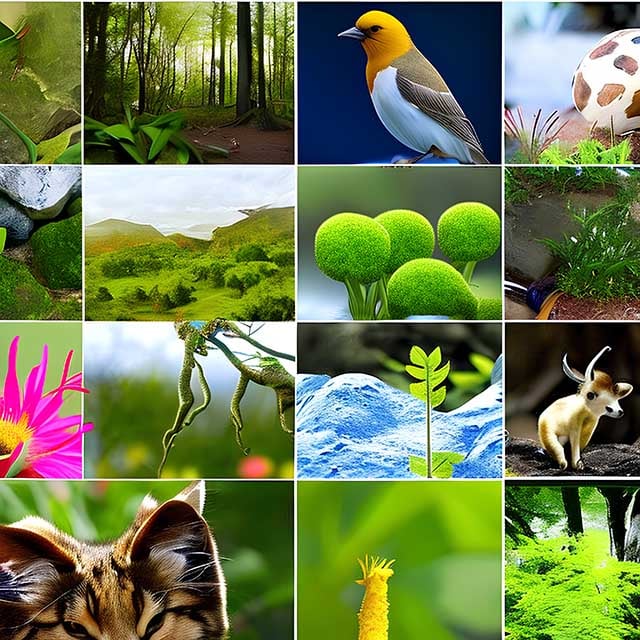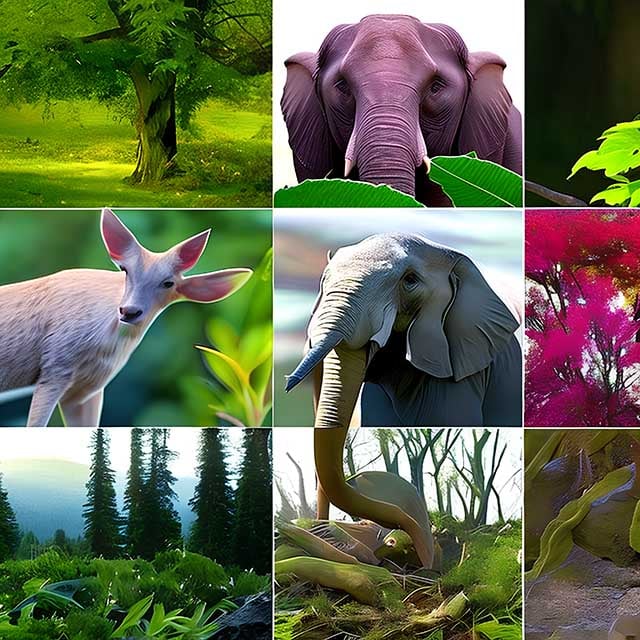Biodiversity is the variety of life on Earth and is an important component of the planet's ecosystems. It plays a vital role in maintaining the health and balance of the environment. There are three levels of biodiversity:
- Genetic diversity: the variety of genes within a species
- Species diversity: the variety of species within a particular area
- Ecosystem diversity: the variety of ecosystems within a particular area

High biodiversity
High levels of biodiversity are important because they increase the resilience of ecosystems and allow them too better adapt to change. However, human activities such as habitat destruction, pollution, and climate change are threatening biodiversity and putting the health of our planet at risk. In this article, we will explore the three levels of biodiversity and discuss how they can be measured.
Levels of biodiversity
 Biodiversity, or the variety of life on Earth, is a crucial component of the planet's ecosystems and plays a vital role in maintaining the health and balance of the environment. There are three levels of biodiversity: genetic, species, and ecosystem diversity. High biodiversity is important because it increases the resilience of ecosystems and allows them to better adapt to change. However, human activities such as habitat destruction, pollution, and climate change are threatening biodiversity and putting the health of our planet at risk. In this article, we will explore the three levels of biodiversity and discuss how they can be measured.
Biodiversity, or the variety of life on Earth, is a crucial component of the planet's ecosystems and plays a vital role in maintaining the health and balance of the environment. There are three levels of biodiversity: genetic, species, and ecosystem diversity. High biodiversity is important because it increases the resilience of ecosystems and allows them to better adapt to change. However, human activities such as habitat destruction, pollution, and climate change are threatening biodiversity and putting the health of our planet at risk. In this article, we will explore the three levels of biodiversity and discuss how they can be measured.
Genetic diversity
The first level of biodiversity is genetic diversity, which refers to the variety of genes within a species. Genetic diversity is important because it allows a species to adapt to its environment and increases its chances of survival. For example, a population of plants with a high level of genetic diversity is more likely to have individuals that can withstand drought or pests.
Species diversity
The second level of biodiversity is species diversity, which refers to the variety of species within a particular area. High species diversity is important because it allows ecosystems to function properly and provides many benefits to humans, such as the pollination of crops and the regulation of the climate.
Ecosystem diversity
The third level of biodiversity is ecosystem diversity, which refers to the variety of ecosystems within a particular area. Ecosystems are complex systems that include living organisms and their physical environment. Ecosystem diversity is important because it allows for the exchange of resources and the provision of ecosystem services, such as the purification of air and water.
Measuring biodiversity
 There are several ways to measure biodiversity. One common method is species richness, which refers to the number of different species in a particular area. Another method is species evenness, which refers to the relative abundance of different species in an area. Other methods include measures of genetic diversity, such as gene flow and genetic variation.
There are several ways to measure biodiversity. One common method is species richness, which refers to the number of different species in a particular area. Another method is species evenness, which refers to the relative abundance of different species in an area. Other methods include measures of genetic diversity, such as gene flow and genetic variation.
In conclusion, biodiversity is a vital component of the planet's ecosystems and is essential for the health and balance of the environment. There are three levels of biodiversity: genetic, species, and ecosystem diversity. High levels of biodiversity are important because they increase the resilience of ecosystems and allow them to better adapt to change. However, human activities are threatening biodiversity and it is important to take steps to protect and preserve the variety of life on Earth.
Reference: The three biodiversity levels



